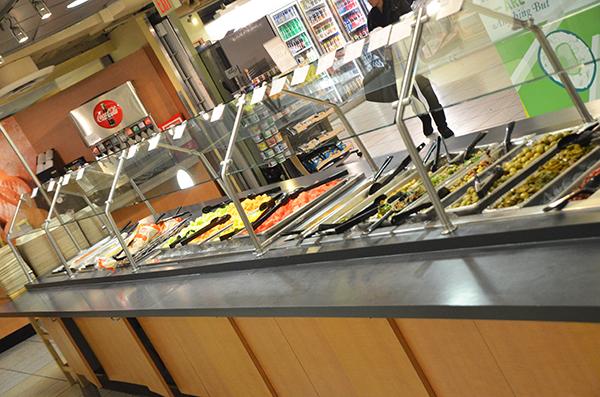
Student leaders say J Street will be in a holding pattern for the next two years, as GW waits for the contract with its service provider to expire before rolling out major changes.
That means incoming freshmen will have the same services that students have criticized for years, such as paying for hot bar and salad options by weight instead of points. Alex Barbieri, last year’s student dining board chair, said administrators refused to open conversations about common complaints because they wanted to wait to see what would happen in 2016.
“Being the dining board chair, you kind of have to be creative with what can and can’t be done while the contract is ending and they don’t know what’s going to happen,” Barbieri said.
Nancy Haaga, director of GW’s campus support services, declined multiple requests to sit for an interview. University spokesman Kurt Hiatt said it is still too early for officials to comment on the contract with GW’s provider, Sodexo.
The last major overhauls to J Street came in 2011 and 2012, when the University swapped out nearly all of the fast-food venues and struck down the requirement that sophomores pay for campus dining dollars.
Molly Hogan, who will lead the dining board this year, said she will gather student feedback before addressing major roadblocks. She said the board will also survey freshmen and sophomores to compare the expectations of new students with those of students who have already experienced J Street.
Hogan said she hopes future changes to the dining hall will help shed its stigma as a solely freshman eatery. She envisions J Street becoming a magnet for meetups and a go-to place for students to grab a meal while they study.
“In an ideal world, it wouldn’t be ‘Ugh, I have to eat at J Street and use my J Street money.’ In an ideal world, you wouldn’t have freshmen coming in with the perception that it’s bad quality,” Hogan said.
Sodexo first came to GW in 2006, replacing long-time provider Aramark. It received just over $6 million in funding for the 2013 fiscal year, according to tax filings.
The food provider has tried to accommodate student requests before, replacing Wendy’s and Chick-fil-A with healthier options. It added back a chain restaurant, Auntie Anne’s, in 2012.
The University’s contract with the corporation generates $11.2 million in revenue a year, and a majority of the profit comes from student dining dollars. Sales from students using dining dollars have risen to $7 million from $6 million since GW signed with Sodexo.








